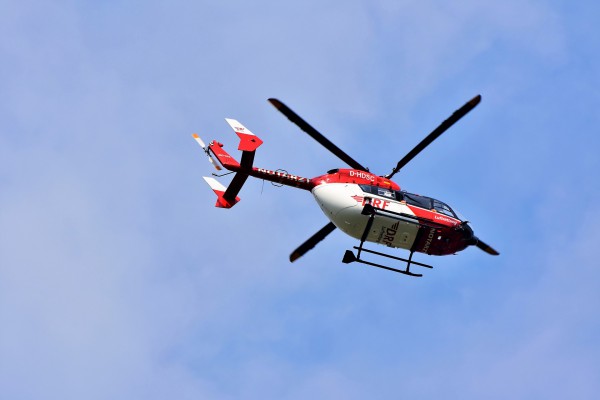The increasing complexity of heli ops
Senior crew are often faced with tricky situations when it comes to helicopters and ancillary vessels…

The narrative surrounding the incorporation of helicopters and ancillary vessels into yacht design has gathered traction recently – and with good reason, explains Rob Tobin, managing director at Riela Yachts...
Senior crew who step on to a yacht that anticipates heli ops (fully commercial or private) and the use of submersibles are entering a much more complex sphere of external influences and increased responsibility. Add in remote and high-latitude cruising grounds and that complexity is compounded.
It is difficult to find captains, chief officers and technical support staff on yachts with the prerequisite experience in a nice, neat package. There will be a few from military backgrounds and some who have gained experience on the job and through formal training. Perhaps there are even those who have joined this industry from offshore support and diving sectors. But what are the options for the rest?
Training is the obvious answer. But what, how and where? The crew might not necessarily have the experience to know what training they need or, indeed, how to identify relevant and necessary courses from ancillary or discretionary training. If you spend time and money undertaking training, you want those skills and qualifications to be real, practical and transferable, so choose your training path and providers wisely.
It is often suggested that the safe operation of submersibles and aircraft should come under the umbrella of the ISM code, but is this a realistic proposition? Should captains and DPAs be responsible for the operation of these vessels when they are away from the vessel?
Likewise, for the time that a helicopter is on deck, the captain is responsible for it and those people flying in it. But that is too simplistic a view of heli ops to be of any practical use. The preparation of the yacht for arrival and departure is critically important, and both are high-risk activities to manage.
Heli ops require specialist training, as Nigel Watson of Nigel Watson Ltd, a market leader in the integration of helicopters and seaplanes aboard luxury yachts, agreed. “Proper attention must be focused upon the helideck crews, their selection, training and the procedures under which they work,” he explained. “Heli-deck training should be provided by an accredited training provider, with candidates receiving an MCA certificate of training following a two-day on-board training course, which should also include a live flying programme. The yacht should organise on-board refresher training to maintain deck-crew currency.”
Clive Harrison, my colleague at Riela Yachts, who has extensive experience in the military, running and coordinating surface, air and subsurface activities and, for the past 13 years, applying that and new-found skills to superyachts, agrees. “A successful path to safe operations is to initially ensure that all involved are fully aware of what their regulatory obligations – and indeed moral responsibilities – are, and to accept them,” he said. “From this starting point, bespoke vessel-wide coordinated operational frameworks can be developed. These in turn will aid the establishment of clear boundaries which can then identify the supporting procedures. Practical integration, coordination and communications, as ever, remain the watchwords.”
“A successful path to safe operations is to initially ensure that all involved are fully aware of what their regulatory obligations – and indeed moral responsibilities – are, and to accept them.”
The flag state has an overarching responsibility to the vessel and tenders (rotary and fixed-wing aircraft and submersibles), yet these new toys continue to stretch the boundaries of law and operation, and this in turn can stretch and reform the application of construction and operational codes of practice.
There is no shortage of skills, experience and resources ashore to design, build and operate exciting missions in incredible places, but in the finite resources available on board the yacht (i.e. the crew), the increasing responsibilities placed on them have to come with enhanced training (on board and ashore) and a summary of the vessel, helicopter, submersible and crew capabilities made clear to the owner and guests to manage their expectations. The days of sitting back and hoping the pilot ‘knows what he is doing’ are over.
Our industry is blessed with a high percentage of the most passionate and engaged seafarers around, and they take on substantial responsibilities and workloads to deliver incredible experiences for their guests. We need to look after those crew and ensure they grow at a pace commensurate with the technical and logistical challenges they face – and the crew has to know where to look for that support.
Safe operations on board will form a core part of the conversations at The Superyacht Forum, which takes places this November. To learn more, click here.
This article originally appeared in The Superyacht Report
Click here to become part of The Superyacht Group community, and join us in our mission to make this industry accessible to all, and prosperous for the long-term. We are offering access to the superyacht industry’s most comprehensive and longstanding archive of business-critical information, as well as a comprehensive, real-time superyacht fleet database, for just £10 per month, because we are One Industry with One Mission. Sign up here.



